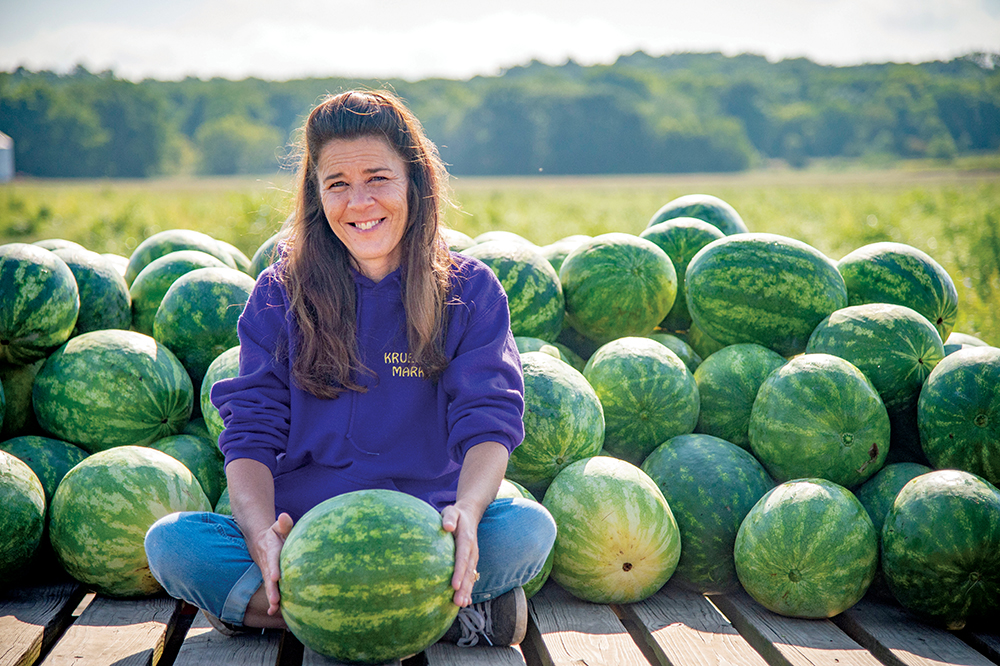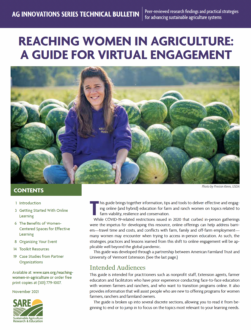Intended Audiences
This guide is intended for practitioners such as nonprofit staff, Extension agents, farmer educators and facilitators who have prior experience conducting face-to-face education with women farmers and ranchers, and who want to transition programs online. It also provides information that will assist people who are new to offering programs for women farmers, ranchers and farmland owners.
The guide is broken up into several discrete sections, allowing you to read it from beginning to end or to jump in to focus on the topics most relevant to your learning needs.

Gendered Focus
The guide incorporates both the characteristics of high-quality programs for women in agriculture and the emerging best practices for adapting farmer education and networking events to virtual platforms. It shares innovative approaches and lessons learned from our efforts and the efforts of our partners to engage women in agriculture under the social distancing requirements associated with the COVID-19 pandemic.
Framework
This guide first reviews some of the challenges and opportunities that come with the decision to use online technology to engage farmer learners and then describes how to select technology tools that align with your learning goals and objectives. We then describe how women-centered learning spaces can reflect best practices in adult learning. The guide goes on to offer ideas, tips and resources for the three phases of an online event:
- pre-event (planning)
- event
- post-event
We have also included vignettes from programming delivered during 2020 that highlight these principles and help bring these lessons to life. Finally, we provide a toolkit of resources that facilitators can use to navigate specific practical and technological aspects of adapting for online engagement.
Limitations
It’s critically important to recognize that many Americans lack access to the kind of reliable, high-speed internet that is needed to fully participate in online education and networking opportunities. At the writing of this guide a solution to this issue has not been discovered, but several local workarounds are being implemented, including the use of technologies that are compatible with smartphones and cell networks, workspaces in libraries, hotspot check-outs from local organizations and programs that provide computers for those in need, such as PCs for People. These challenges should be considered at the outset of online engagement planning, and local communities should be consulted to help design programming that will enable adequate and equitable access for all women.
The Learning Circle Model
Throughout this guide, you’ll hear a lot about online engagement of women in the context of Learning Circles. American Farmland Trust’s Learning Circle Model arose out of early partnerships with the Women Food and Agriculture Network’s Women Caring for the Land™ program, which has been developed and tested, and ultimately proven effective, as a way to specifically engage women landowners and producers in conversations about land management, particularly regarding agricultural best management practices for soil health and water quality. With no visible hierarchy at these gatherings, everyone is ensured of the security and value of their input to the discussion. Experts are encouraged to communicate their information without slideshows, and hands-on, interactive demonstrations (potentially via prerecorded or live-streamed digital versions) and in-depth discussion are encouraged.
